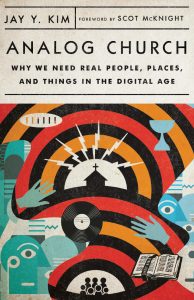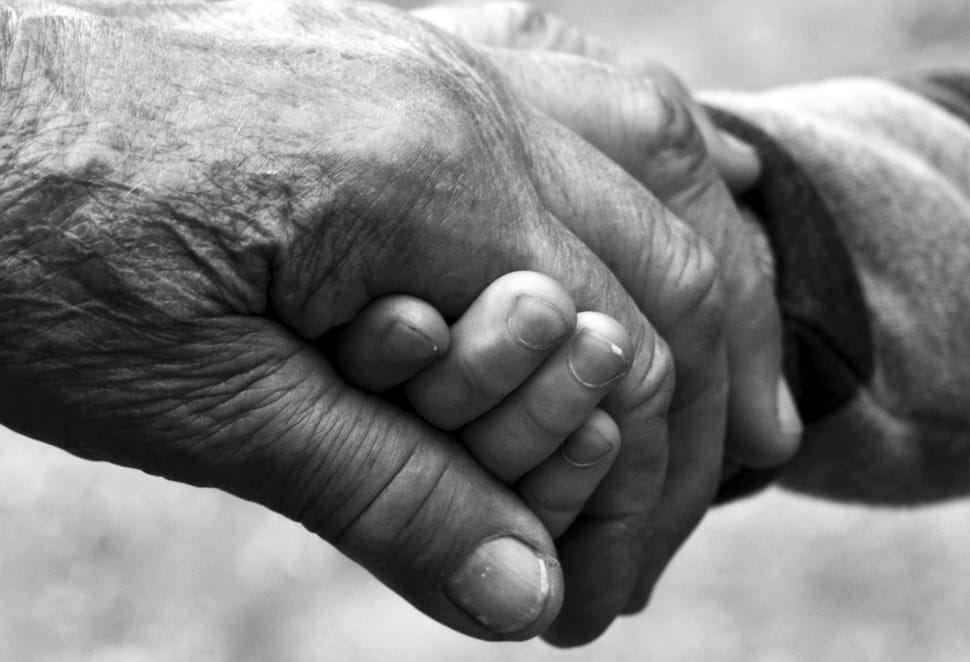Caldwell, ID. Few American pastors have had to work through the complexities and heartbreaks of caring for parishioners during an epidemic, much less a pandemic of the scale we are now facing. Unlike the pastors who braved pandemics in the past, however, American pastors now have the capacity to live-stream services and meet virtually with parishioners across the boundaries of quarantine. Gratitude for these connections, however, should not prevent thoughtful criticism of how these practices might or might not be valuable for the long-term health of the Christian church. It remains to be seen whether this rapid expansion of digital mediation into all kinds of new territory—elementary school classrooms, happy hours, proms—will result in a renewed appreciation for life unpixellated or for a further digitization of our everyday lives.
 Jay Y. Kim’s Analog Church: Why We Need Real People, Places, and Things in the Digital Age was published on March 31, 2020, just as the new norms of the coronavirus pandemic upended daily engagement with real people, places, and things in a panoply of unsettling ways. This interview draws on his book as well as his work as a pastor during the coronavirus pandemic.
Jay Y. Kim’s Analog Church: Why We Need Real People, Places, and Things in the Digital Age was published on March 31, 2020, just as the new norms of the coronavirus pandemic upended daily engagement with real people, places, and things in a panoply of unsettling ways. This interview draws on his book as well as his work as a pastor during the coronavirus pandemic.
Kim is pastor of teaching and leadership at Vintage Faith Church in Santa Cruz, California. He also serves on the core leadership team of the ReGeneration Project and cohosts the ReGeneration Podcast.
Stewart: A friend of mine recently suggested that churches might have some undiagnosed problems if they can transition too seamlessly into livestream services and an online mode due to the pandemic. What do you make of that idea?
Kim: It’s an intriguing thought. I think that all significant disruptions to our lives have the potential to reveal and uncover things that we probably should’ve paid more attention to. We’re seeing that in the midst of COVID-19. I think it’s important to note that all of the churches that had livestreaming and robust online presence prior to the pandemic aren’t monolithic. So I have a hard time lumping all churches that “can transition too seamlessly into livestream and online mode” into the category of having “undiagnosed problems.” Broadly speaking, all churches probably have a series of undiagnosed problems. That seems to be the nature of human beings and human communities. I do hope that the time we’re in will recalibrate us though and help us reconsider and reimagine our priorities.
Stewart: While there is a part of me that wonders if our fast from public life as a result of the pandemic will lead to a more exuberant embrace of public life once we can return, I also worry that our digital infrastructure has been expanded so rapidly and widely due to the pandemic that we will find ourselves spending even more time tethered to screens. What do you see so far?
Kim: I think that’s a valid concern. But if I had to lean one way or the other, I’d lean toward the former being more likely than latter. Maybe that’s just wishful thinking; but most of the stuff I’m reading, from experts and everyday folks alike, is that digital fatigue is increasing in surprising ways. The endless stream of Zoom calls, Google hangouts, and Facetime conversations—while incredibly helpful in keeping us pseudo-connected during this time of physical separation—their limitations are being exposed.
I sense an increasing awareness of our need for embodied presence. I’m hopeful, even confident, that as restrictions are lifted, we’ll see more of the exuberant embrace than increased tethering to our screens. This isn’t to say that there won’t be apprehension and hesitation about physical closeness. I think this pandemic will indeed affect the way people think about public spaces and physical proximity. I think caution and concern will increase, at least for a while after this is over. But nevertheless, I think we’ll find our way back to embodied presence. And when we do, we’ll celebrate it.
Stewart: The pandemic has resulted in tremendous suffering for many. While acknowledging and lamenting that suffering, it might also be worthwhile to start thinking about what it may have revealed to us and what we might learn from it. Surely the aftermath of the pandemic will continue to force changes on us in ways both anticipated and not. How are you attempting to help your church grow healthier through this crisis?
Kim: To be honest, I haven’t been thinking a whole lot about helping our church “grow healthier” in this season. Before COVID-19, like most church leaders I know, I leaned hard into vision and inspiration, trying my best to motivate our community to follow me up to new mountaintops and take new ground, missionally speaking. But in this season, I’ve made two key shifts—rather than “thinking ahead,” I’ve tried to “think deeply,” and rather than “leading out,” I’ve tried to “lean in.”
Rather than trying to think ahead to the next thing, prognosticating and problem-solving, I’ve been trying to think deeply about today, the current moment, the present circumstances we face. Rather than leading out onto new frontiers, I’ve been trying to lean into our people, where they are, what they’re going through, their fears, anxieties, uncertainties. Not sure if that quite answers your question, but this is the stuff that primarily comes to mind.
Stewart: Wilfred McClay recently suggested an analogy I like—that our digital worlds are like Plato’s cave, and that we, like some of the prisoners in the cave, prefer the shadows to the substance. At the same time, it seems more common, at least in conversations I’ve had, for people to hate their technological crutches and wish they could eliminate them. Facebook/Instagram/whatever seem more like guilty pleasures in some circles now, rather than the next big thing. What do you think?
Kim: I think you’re probably right about where the analogy breaks down. I agree that there seems to be a growing awareness of the shadow-side of technology. The writer Paul, in his letter to the Colossians, in chapter 2, refers to Plato’s cave metaphor and while he wasn’t leveling his critique against technology, I do hope his words ring truer and truer for us today: “These are a shadow of the things that were to come; the reality, however, is found in Christ.”
Stewart: In your book you criticize the abuse of technology in churches—the use of video in services, for example—but allow for potential wise use. Are there any new technologies made for churches that you think churches should simply reject outright, rather than try to use wisely?
Kim: No. Technology is not the enemy. Our misuse is the problem. Technology itself is amoral. It’s the human tendency to wrongly prioritize and even idolize certain things at certain times that we have to be aware of and account for.
Stewart: You have spent most of your life in the California Bay Area. How has this place shaped your pastoral ministry and work in this book?
Kim: Yes, I’ve spent almost my entire life in the Silicon Valley. I think home and community and localized culture always shapes our work, in both known and unknown ways. One way in particular that comes to mind is that, all my life, I’ve been surrounded by friends and family who work in the tech industry. It’s given me an interesting perspective. Because I get to peek behind the curtain, so to speak, of the digital tools we so readily use, I’m often able to see them for what they actually are, in the real world. My smartphone is a great tool. It’s made my life quite efficient and convenient. But I’m also able to see it in a much more tactile, real way. In my worst moments, when I find myself lost in the endless digital stream of my social media feed, I’m often able to snap out of it and recognize quickly that in real life, I’m standing in a real room with real people, staring at a black plastic box. I think the fact that I’ve been surrounded by this stuff and the people who make this stuff most of my life has a lot to do with that.
Stewart: For those who are sympathetic to your criticism of churches chasing the next big thing in the attempt to remain relevant, how can we prevent what you have described as “analog church” from becoming just another evangelical fad? As a parallel example, I can imagine that people might reject vinyl again someday—could that happen with the practices you are encouraging in your book? In what way might we prevent that?
Kim: The term “analog church” will certainly have a shelf life. So I guess one could label it a fad and that’d be fine with me. But the point I’m trying to make with the term, in my estimation, has no shelf life. It’s not a fad or a novel idea. It’s the timeless and undeniable reality of what it means to be the church—the body of Christ, the embodied, physical, incarnational, gathered people of God. An unlikely “fellowship of differents,” to borrow from the theologian Scot McKnight.
Digital can be helpful in pointing us in that direction, but a fully realized church will always strive toward more and more analog realities. When I’m out of town, I’m grateful for the digital technology which allows me to Facetime my wife and kids. I’m glad I can see their faces and hear their voices. But what it really does is simply make me long to get home, to hold them in my real arms, to give them real hugs. That’s digital at its best—pushing and prodding us toward more analog, embodied, physical, tactile, incarnational realities. And so it is with the church. That has always been and will always be true, whether we call it “analog church” or not.
Stewart: What has been your toughest pastoral challenge during the pandemic? What has encouraged you?
Kim: The toughest challenge has been the separation, the lack of the physical proximity. I miss our people. I miss seeing their faces, hearing their voices, the warmth of their presence, sharing a cup of coffee or a meal. In just the past two weeks, I’ve presided over the graveside memorial service of an elderly woman in our church, an absolute saint, as well as a hospital visit to grieve with a wonderful young couple in our church, as we dedicated their prematurely born daughter, before she eventually passed. At both, I couldn’t embrace those who were mourning and had to keep the requisite six feet of distance. Everything about it felt so strange and so incomplete.
But simultaneously, these experiences have also been sources of great encouragement. The resilience and resolve of people, showing up for these moments that demand embodied presence, in spite of the challenges, reveals our true colors—intrinsically, we understand that there are no digital substitutes that adequately express our commitment to one another when it comes to the stuff of life that matters most.












